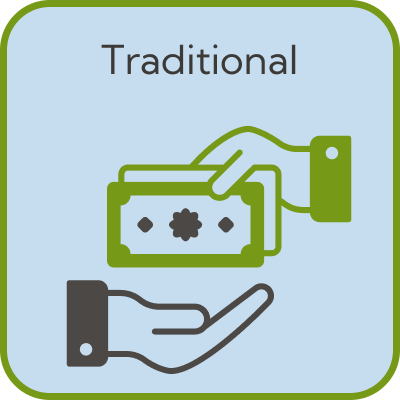Fundraise by participating in Self-organised barefoot trail hike!
Self-organised barefoot trail hike
Imagine embarking on a self-organized barefoot trail hike, blending an adventure with the noble cause of fundraising. In this activity, you will hit the trails without shoes, connecting with nature directly through the soles of your feet while supporting a charity of your choice. The unique challenge of hiking barefoot adds an intriguing twist to traditional fundraising events, making it a compelling story that donors are more likely to support.
Hiking barefoot isn’t just about testing your physical limits, it's a great way to raise awareness and funds. It naturally garners interest and curiosity, which can be leveraged to engage more sponsors and donors. People are drawn to support endeavors that stand out, and your commitment to hike barefoot on rugged terrains for a cause certainly does.
When organizing this event, start by selecting a safe, accessible trail that matches your comfort and fitness level. Ensure it’s permissible to hike barefoot in the area you choose. Planning is crucial, so survey the route in advance to identify potential safety issues. Since this is a physically demanding activity, it’s essential to train your feet for the terrain by gradually increasing your barefoot walking time prior to the event.
Promotion plays a key role in fundraising, so share your journey extensively on social media, highlighting the cause you are supporting and the unique nature of hiking barefoot. Engage potential donors with regular updates, intriguing visuals, and interesting tidbits about the health and environmental benefits of barefoot hiking.
Regarding the best Sponsivity challenge types for this event, the Time Challenge and the Wager Challenge would be particularly suitable. In the Time Challenge, sponsors can pledge to donate based on how quickly you complete the hike, adding an element of urgency and excitement to your adventure. The Wager Challenge, on the other hand, could involve setting a fundraising threshold you must meet before committing to your barefoot hike. This type of challenge taps into the emotional engagement of your audience, as they get involved not just to see if you can do it but to help initiate the challenge itself.
Overall, by choosing to undertake a self-organized barefoot trail hike for charity, you create a memorable and shareable experience that not only challenges you but also brings immense value to the community you aim to support. Through careful planning, strategic promotion, and choosing the appropriate fundraising models, your event can be a resounding success.

Sponsivity offers you several ways to raise for Self-organised barefoot trail hike


🚶 Walking – An Accessible & Inclusive Fundraising Challenge
Walking is one of the most accessible and inclusive ways to fundraise, making it ideal for participants of all ages and fitness levels. Whether it’s a personal step challenge, a long-distance trek, or a community walking event, walking-based fundraising is a great way to raise money while promoting physical activity and well-being.
Why Walking Works for Fundraising:
- Inclusive & Low-Impact: Walking is suitable for everyone, from young children to seniors, making it perfect for family-friendly and corporate fundraising events.
- Endurance & Achievement: Long-distance walks, such as marathon walks, charity hikes, or multi-day treks, provide a strong personal challenge that attracts donor support.
- Social & Team-Oriented: Walking challenges can be done individually or in groups, making them great for workplace fundraising, school events, or community initiatives.
- Easy to Track & Share: Fundraisers can log their daily steps, distance, or time, sharing progress with supporters through social media and fundraising pages.
Examples of Walking-Based Fundraisers:
- Step Challenge: “I’m walking 10,000 steps every day for a month—sponsor me per step!”
- Distance Challenge: “Support me as I trek 50 miles for charity!”
- Themed Walks: Fancy dress charity walks, night-time city walks, or virtual walking challenges add extra engagement.
Walking challenges offer a fun, healthy, and accessible way to raise funds while encouraging people to stay active and support a great cause!
Set bespoke rewards that suit walking
- Wear donor names on a walking vest
- Display a personalised thank-you sign and on the walk
- Videoed song dedicated to your donation
🥾 Hiking – A Scenic & Endurance-Based Fundraising Challenge
Hiking is a fantastic way to raise money for charity while exploring nature and pushing physical limits. Whether it's a local hill walk, a long-distance trek, or a multi-day adventure, hiking challenges offer fundraisers an exciting and rewarding way to engage their networks and support a cause.
Why Hiking Works for Fundraising:
- Accessible & Customizable: Hikes can range from beginner-friendly nature trails to extreme mountain ascents, making them suitable for all fitness levels.
- Endurance & Adventure: Completing a tough or long-distance hike creates a compelling story that motivates donors to contribute.
- Team & Solo Options: Hiking challenges can be done individually or in groups, making them perfect for corporate fundraising, school teams, or community events.
- Engaging Content for Supporters: Stunning landscapes and adventure-filled experiences make hiking challenges highly shareable on social media, increasing visibility and donations.
Examples of Hiking-Based Fundraisers:
- Distance Challenge: “I’m hiking 100 miles this summer to support mental health charities—sponsor me per mile!”
- Peak Challenge: “Help me reach my fundraising goal as I climb the Three Peaks for charity!”
- Multi-Day Trek: “Support my journey along the Inca Trail—every donation helps my chosen cause!”
Hiking challenges combine fitness, adventure, and charity, making them a highly engaging and effective way to fundraise while enjoying the great outdoors!
Set bespoke rewards that suit hiking
- Carry a flag your donor message to the summit
- Take a detour to location X
- Engrave donor message on a walking stick
💪 Physical Endurance – A Test of Strength & Stamina for Charity
Physical endurance challenges are some of the most demanding and rewarding ways to raise money for charity. These events push fundraisers to their limits, whether through long-distance running, cycling, swimming, or multi-hour challenges, making them highly compelling for donors. The harder the challenge, the more supporters are inspired to give.
Why Physical Endurance Works for Fundraising:
- High Engagement: Donors love to support fundraisers who commit to extreme endurance challenges, seeing their dedication as a strong reason to give.
- Scalable & Inclusive: Endurance events can range from personal step challenges to Ironman triathlons, making them accessible for all fitness levels.
- Long-Term Fundraising Potential: The extended training and preparation period allow fundraisers to build momentum and keep donors engaged.
- Great for Time & Distance Challenges: Fundraisers can challenge themselves to beat a time, achieve a distance, or push beyond their limits for charity.
Examples of Physical Endurance-Based Fundraisers:
- Marathon or Ultra Run: “Help me raise £2,000 as I take on my first 100K ultra-marathon!”
- Long-Distance Cycle Challenge: “I’m cycling 1,000 miles across the UK for charity—sponsor me per mile!”
- Extreme Fitness Challenge: “I’m doing 24 hours of non-stop exercise—every donation pushes me further!”
Physical endurance fundraisers inspire, challenge, and motivate, creating an unforgettable experience for participants and a powerful reason for supporters to donate.
Set bespoke rewards that suit physical endurance
- Playlist pick - any song of your choice repeated 3 times on my playlist!
- Photo eating your chosen race snack (max 50g!)
- 20 press-ups after the finishline
📅 Self-Organised – Fundraising on Your Terms
Self-organised fundraising challenges put you in control, allowing fundraisers to create a challenge that’s unique, personal, and tailored to their passions. Unlike organised events, self-organised challenges offer complete flexibility—whether it’s a solo endurance test, a creative personal challenge, or a community-driven activity.
Why Self-Organised Challenges Work for Fundraising:
- Full Flexibility: Choose the activity, location, and timing that works best for you, making fundraising accessible and achievable.
- Personal & Meaningful: Custom challenges allow fundraisers to connect with their audience by choosing something significant to them.
- Low-Cost & Inclusive: Without the need for event entry fees or logistics, anyone can participate, making it easy to involve family, friends, or colleagues.
- Perfect for Challenge Chain & Wager Models: Self-organised challenges can inspire others to join in, spreading the impact through viral nominations.
Examples of Self-Organised Fundraisers:
- Personal Running Challenge: “I’ll run 5K every day for a month—support my journey!”
- DIY Fitness Marathon: “I’m doing 1,000 push-ups in a day—every donation pushes me further!”
- Creative Challenge: “I’ll cycle across the country dressed as a superhero—help me hit my fundraising goal!”
Self-organised challenges allow fundraisers to turn their creativity, passions, and dedication into real impact, making it a powerful and accessible way to raise money for a cause.
Set bespoke rewards that suit self-organised event
- Rename the challenge in your honour
- Bring home-baked cookies to the finishline